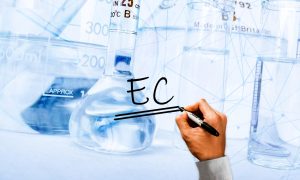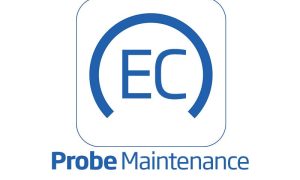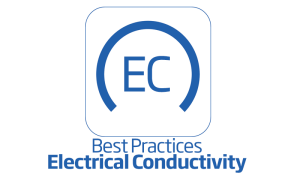Drifting/Erratic Readings
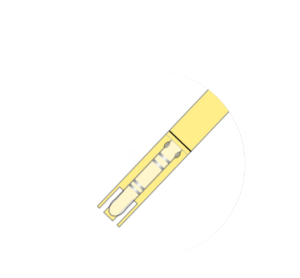
Is your probe dirty?
Depending on your sample, debris could be liable to stick to the probe.
Clean the probe regularly to prevent buildup between the electrodes
(two electrode probe) or blockage of the vent hole (four ring probes).
Rinse the probe in between readings, and before/after storage in order to help prevent buildup. Especially when working with water, residue may not be visible to the naked eye, so when in doubt, rinse.
Is the probe set-up correctly?
Make sure that the probe connector is properly connected to the meter (if using a probe with a cable). For 3.5 mm connectors, ensure
that the pin is inserted all the way into the port. For DIN/Quick DIN connectors, double check that the pins are lined up properly. If your probe is a new four ring probe, take a look inside the probe sleeve near the bottom. There is a small clear rubber circle around the internal section of the probe. This is to help preserve the probe during shipping, but it can interfere with your readings. Carefully remove the rubber circle, then re-calibrate the probe.
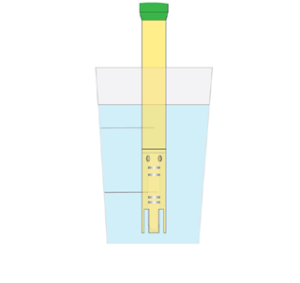
Did you choose the right probe for your sample?
Check that your probe is correctly submerged. Two electrode probes only need to be slightly submerged to cover the plates. Four ring
probes require that the vent hole above the rings be submerged as well. Make sure that there is at least one inch of clearance between the
probe and all sides of the beaker. Check the usable measurement range for your two electrode probe. If your sample is out of range you need a four ring probe.
Did you calibrate?
Proper and frequent calibration is key. If the probe is used daily, calibrate
daily. If not, calibrate the probe prior to use.
Inaccurate Readings
Polarization Effect happens when a charge builds up between the two electrodes. This extra charge can cause your EC readings to be
lower than they are expected to be. This can be minimized by two electrode probes that are made out of graphite instead of stainless
steel. Fringe Field Effect is when the measurement field, the constant electrical current, extends outside of the four-ring probe. You only need to worry about the fringe field effect if your probe is too close to the sides of the container or pipe where you are taking an EC measurement. A good rule of thumb is to keep the probe at least an inch away from all surfaces. The distance you need to keep the probe varies, so just check the manual.
Did you calibrate?
If you are testing for USP standards, or in aggressive chemicals, you will need to calibrate more often. If the probe is used daily, calibrate
daily. If not, calibrate the probe prior to use.
Did you calibrate correctly? Check out your product manual or visit https://hannaservice.eu/best-practices-electrical-conductivity-ec-tds/
Did you use the right calibration standard?
When doing a single point calibration, calibrate in the air first (zero point) and then the calibration standard used should be as close to the actual concentration of your sample as possible. If your sample concentration fluctuates regularly in a wide range, you may need a probe and meter that can calibrate to multiple standards to increase your accuracy.
Thermal equilibrium
Even with temperature compensation, it takes time for the probe to reach a stabilized temperature state. Make sure to allow a few minutes for the probe to reach this equilibrium.
Air Bubbles can wreak havoc on readings as the sensing parts of the probes may not be completely submerged in the sample. Gently
swirl the probe and/or tap the probe on the bottom of the beaker. This should be enough to dislodge any trapped bubbles.
Maybe what’s in your analyte is non-ionic. Not all things that cause TDS to break apart into ions while in solution. Double-check that your analyte breaks apart into ions when in solution. If it does not become ionic, there could be other means of testing available
Probe Will Not Calibrate
Contaminated Standard
Remember that the calibration standards have no buffering capacity. Try taking some new/clean beakers and pouring fresh standard into each. Then, use one beaker as an additional “rinse” to help keep the standard for calibrating as free of contamination as possible.
Contaminated rinse water
EC probes are very sensitive, and as mentioned above, the calibration standards are easily contaminated. Old rinse water, or water from the tap, can introduce contaminants. Distilled water can be used, with deionized water being the best option.
Storage of the probe
EC probes should be stored dry unless they are a combination EC/pH probe. If you have a combination probe, the probe should be stored in HI70300 storage solution in order to keep the pH glass probe hydrated and in working order. Be sure to thoroughly rinse the probe thoroughly
before doing an EC calibration.
We have put together this guide to serve as a quick reference tool. Always remember to consult the instruction manual or contact us directly for detailed instructions for your specific needs.
Did you like this short guide? Get your free sample here.
Stay tuned for more similar content from HANNA lab. Subscribe here.

